Practical Tips to Elevate CX with Hyper-Personalization
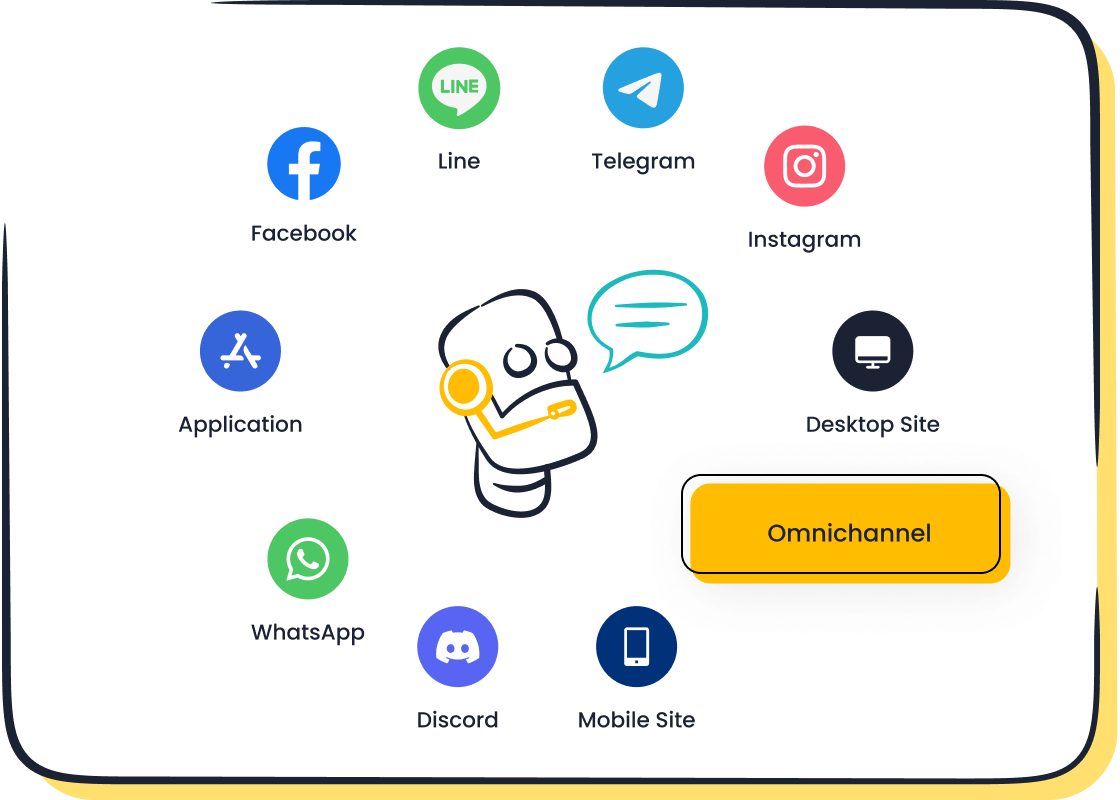
Imagine walking into a store where every product seems tailored just for you. That’s the magic hyper-personalization brings to customer experience (CX trends). It’s not just a trend; it’s a game-changer. Businesses that invest in hyper-personalized strategies often see up to 25% revenue growth and cut customer acquisition costs by half. Not only that, fast-growing companies generate 40% more revenue from personalization compared to slower ones.
Tools like Sobot make this transformation possible. Sobot's Chatbot helps you deliver meaningful, individualized experiences through smart automation and real-time intent analysis. But personalization isn’t just about technology; it’s about trust. Customers expect tailored interactions, yet they also demand transparency. Balancing personalization with ethical data practices ensures you meet their expectations while respecting their privacy.
Understanding Hyper-Personalization in CX

What is Hyper-Personalization?
Hyper-personalization takes personalization to the next level. It’s not just about knowing your customer’s name or sending them a birthday discount. It’s about using advanced technology, like AI and machine learning, to create experiences tailored to their unique preferences, behaviors, and needs. This approach relies on real-time data and insights to deliver individualized interactions that feel authentic and meaningful.
Recent research defines hyper-personalization as a transformative strategy that fosters deeper connections with customers. It’s essential in today’s data-driven world, where customers expect brands to understand them on a personal level. For example, a survey by Assurant identified eight distinct mobile personas based on shopping habits and interests. Businesses can use this kind of segmentation to craft messages, services, and pricing that resonate with each persona.
Key Components of Hyper-Personalization
Hyper-personalization thrives on a few key elements:
- Segmentation: The power of segmentation allows you to group customers based on behaviors, preferences, and even predictive insights. This goes beyond demographics, diving into what truly drives their decisions.
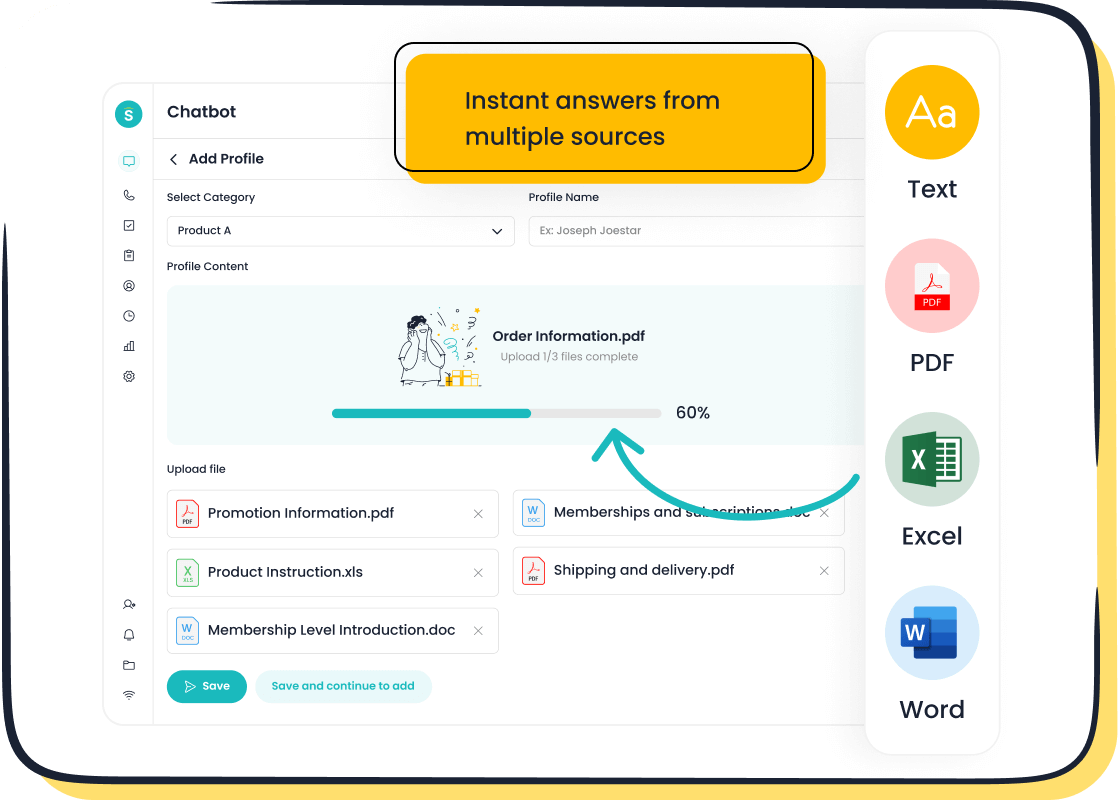
- Real-Time Data: Hyper-personalization uses live data to adapt interactions instantly. For instance, Sobot’s AI Chatbot analyzes customer intent in real time to provide accurate responses and proactive recommendations.
- Omnichannel Integration: Customers interact across multiple platforms—social media, email, chat, and more. Hyper-personalization ensures seamless experiences across all these channels.
- AI and Automation: Tools like Sobot’s Chatbot leverage AI to automate repetitive tasks and deliver personalized interactions at scale.
These components work together to create a customer experience that feels less like marketing and more like a genuine connection.
How Hyper-Personalization Differs from Traditional Personalization
Hyper-personalization isn’t just an upgrade; it’s a complete shift in how businesses approach customer engagement. Here’s a quick comparison:
| Aspect | Traditional Personalization | Hyper-Personalization |
|---|---|---|
| Data Usage | Basic data, static | Advanced data, real-time |
| Technology | Limited tools, manual | AI, predictive analytics, automation |
| Engagement | Generic campaigns, broad audience | Tailored messages, specific audience |
| Adaptability | Fixed strategies | Dynamic adjustments, real-time updates |
| Customer Insights | Demographics only | Behavioral, contextual, and predictive |
| Retention | Low retention rates | High retention, loyal customers |
| Examples | Name-based emails, birthday discounts | Netflix suggestions, Amazon recommendations |
| Impact on ROI | Lower ROI | Higher ROI |
Hyper-personalization uses tools like Sobot’s AI Chatbot to deliver dynamic, tailored experiences that adapt to customer needs in real time. This approach boosts engagement, drives conversions, and builds loyalty by making customers feel truly understood.
Benefits of Hyper-Personalization for Customer Contact Centers
Hyper-personalization transforms customer contact centers into hubs of meaningful engagement. By tailoring every interaction to individual needs, you can create experiences that feel personal and authentic. This approach doesn’t just improve customer satisfaction—it drives measurable results across key metrics.
Why Hyper-Personalization Matters
When customers feel understood, they engage more. Personalized communication makes them feel valued, which leads to stronger connections. For example, Sobot’s AI Chatbot uses real-time data to analyze customer intent and deliver tailored responses instantly. This level of personalization boosts engagement and ensures customers get the help they need without delay.
Measurable Benefits
Hyper-personalization delivers tangible improvements for customer contact centers. Here’s a snapshot of its impact:
| Benefit | Description |
|---|---|
| Increased Customer Engagement | Personalization leads to higher engagement as customers respond better to tailored communications. |
| Higher Conversion Rates | Personalized messages increase the likelihood of customers placing orders, enhancing conversion rates. |
| Improved Customer Lifetime Value | Enhanced loyalty results in longer-term relationships, increasing the overall customer lifetime value. |
| Increased Net Promoter Score (NPS) | Satisfied customers are more likely to recommend the organization, boosting its reputation through word of mouth. |
| 63% of marketers observe personalization | Personalization increases customer interactions and ultimately leads to better conversion rates. |
These benefits highlight why hyper-personalization is essential for modern customer contact centers.
Real-World Example
Take Michael Kors, for instance. By integrating Sobot’s solutions, the brand reduced response times by 83% and achieved a 95% customer satisfaction rate. Their use of personalized messaging through Sobot’s WhatsApp API also increased conversion rates by 20%. This success story shows how hyper-personalization can elevate engagement and drive business growth.
Hyper-personalization isn’t just a strategy—it’s a way to build trust and loyalty. When you use tools like Sobot’s AI Chatbot, you can deliver seamless, personalized experiences that keep customers coming back.
Ethical Data Collection and Privacy in Hyper-Personalization
Importance of Transparency and Consent
When it comes to hyper-personalization, trust is everything. Customers want tailored experiences, but they also want to know how their data is being used. In fact, 39% of consumers prioritize transparency in data usage. This means you can’t just comply with privacy laws—you need to go the extra mile to show customers you respect their privacy.
Transparency builds trust. When you’re upfront about how you collect and use data, customers feel more confident sharing their information. It’s not just about following the rules; it’s about creating a partnership. For example, clear consent forms and easy-to-understand privacy policies empower customers to make informed decisions. This approach doesn’t just protect their rights—it strengthens your relationship with them.
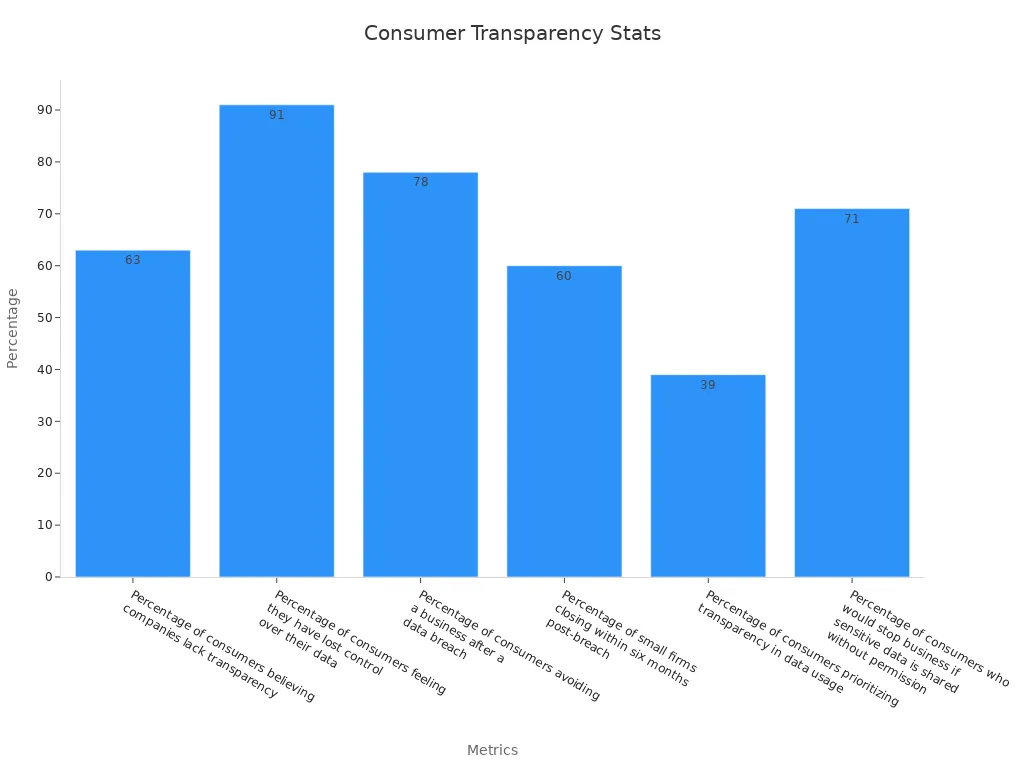
Best Practices for Ethical Data Collection
Gathering the right data ethically is key to successful hyper-personalisation. Start by collecting only what you need. Overloading on data not only risks breaches but also erodes trust. Instead, focus on gathering the right data that directly enhances the customer experience.
Here are some best practices to follow:
- Be clear and concise: Use simple language to explain why you’re collecting data and how it will be used.
- Offer control: Let customers opt in or out of data collection. This gives them a sense of ownership over their information.
- Conduct regular audits: Review your data practices to ensure they align with ethical standards and customer expectations.
- Embed ethics into your culture: Companies like Microsoft and Apple have set examples by prioritizing privacy and transparency in their operations.
By adopting these practices, you can create a data collection process that respects your customers and supports hyper-personalization.
Compliance with Data Privacy Regulations (e.g., GDPR, CCPA)
Regulations like GDPR and CCPA aren’t just legal hurdles—they’re opportunities to build trust. These laws require you to be transparent, secure, and respectful when handling customer data. Non-compliance can lead to hefty fines and damage your reputation.
For example, GDPR mandates that you obtain explicit consent before collecting data. It also gives customers the right to access, correct, or delete their information. Similarly, CCPA focuses on giving customers control over their data, including the right to opt out of its sale. By adhering to these regulations, you show customers that you value their privacy.
Sobot’s solutions, like its AI Chatbot, are designed with compliance in mind. They ensure data encryption, secure backups, and adherence to global privacy standards. This means you can focus on delivering hyper-personalized experiences without worrying about legal risks.
How Sobot Ensures Data Privacy in Its Solutions
When it comes to hyper-personalization, protecting customer data isn’t just important—it’s non-negotiable. Sobot understands this and has built its solutions with privacy and security at the core. Here’s how Sobot ensures your customers’ data stays safe while delivering exceptional customer experiences.
1. Data Encryption at Every Step
Sobot uses advanced encryption protocols to secure data during transmission and storage. Whether it’s a chat interaction or a customer’s purchase history, the information is encrypted to prevent unauthorized access. This ensures that sensitive data remains protected, even in the unlikely event of a breach.
2. Compliance with Global Privacy Standards
Sobot’s solutions are fully compliant with major data privacy regulations like GDPR and CCPA. For example, the Sobot AI Chatbot operates within these frameworks, ensuring that your business meets legal requirements while respecting customer rights. By adhering to these standards, Sobot helps you build trust with your audience.
3. Continuous Encrypted Backups
Sobot takes no chances with data loss. The platform performs regular encrypted backups, ensuring that customer data is always recoverable and secure. This feature minimizes risks and keeps your operations running smoothly, even during unexpected disruptions.
Tip: Transparency is key. Sobot provides clear privacy policies and consent options, so your customers always know how their data is being used.
4. AI-Powered Privacy Features
Sobot’s AI solutions, like the AI Chatbot, are designed to handle customer data responsibly. The chatbot uses anonymized data for training, ensuring that personal information is never exposed. This approach allows you to deliver hyper-personalized experiences without compromising privacy.
5. Real-World Success
Michael Kors, a global luxury brand, trusted Sobot to enhance its customer experience while maintaining strict data privacy. By integrating Sobot’s solutions, they achieved a 95% customer satisfaction rate and ensured compliance with privacy laws. You can read more about their success here.
With Sobot, you don’t have to choose between hyper-personalization and data privacy. You get both—seamlessly.
Practical Steps to Implement Hyper-Personalization
Centralizing Customer Data for a Unified View
Imagine trying to solve a puzzle with pieces scattered across different rooms. That’s what it feels like when your customer data is siloed. Centralizing this data into a unified view is the first step toward effective hyper-personalization. It allows you to see the full picture of your customers’ preferences, behaviors, and needs.
A single customer view (SCV), also called a 360-degree customer view, gathers all data about your prospects and clients into one record. This unified approach ensures that every interaction feels personal and relevant. For example:
- A multinational company consolidated data from global CRM systems and regional e-commerce platforms. This gave them consistent insights across geographies.
- A financial services firm analyzed customer journeys to predict churn risks and create personalized retention strategies.
Sobot’s solutions make this process seamless. By integrating tools like the Sobot AI Chatbot with your CRM, you can unify customer profiles and access real-time data. This helps you deliver personalized experiences across all touchpoints, whether it’s through chat, email, or social media.
Tip: Start small. Focus on integrating data from your most critical channels first, then expand to create a comprehensive view.
Leveraging AI and Machine Learning with Tools Like Sobot Chatbot
AI and machine learning are the engines that drive hyper-personalization. They analyze vast amounts of data to uncover patterns, predict behaviors, and deliver tailored experiences. Without these technologies, achieving true personalization at scale would be impossible.
Here’s how AI and machine learning make a difference:
- Increased Conversion Rates: E-commerce platforms report higher sales when customers see personalized product suggestions.
- Higher Retention Rates: Streaming services like Netflix keep users engaged by recommending content based on viewing history.
- Greater Content Interaction: Social media platforms use personalized feeds to boost user engagement and time spent on their sites.
Sobot’s AI Chatbot takes this a step further. It uses real-time data to understand customer intent and provide instant, accurate responses. Its multilingual capabilities and omnichannel support ensure that every interaction feels personal, no matter where it happens. Plus, the chatbot’s no-coding-required setup makes it easy for businesses of all sizes to implement.
Did you know? Businesses using AI-driven personalization see up to a 20% increase in conversions. With tools like Sobot, you can achieve similar results while saving time and resources.
Mapping the Customer Journey for Key Personalization Touchpoints
Every customer journey is unique, but they all share key moments where personalization can make a big impact. Mapping this journey helps you identify these touchpoints and tailor your interactions accordingly.
Start by analyzing metrics like session activity, bounce rate, open rate, and conversion rate. These insights reveal where customers engage most and where they drop off. For example:
- Session Activity: Shows how long users spend on specific pages, helping you spot trends.
- Bounce Rate: Indicates if your content is resonating or needs improvement.
- Open Rate: Measures the effectiveness of your email campaigns.
- Conversion Rate: Tracks how many users complete desired actions, like making a purchase.
Once you’ve mapped the journey, use tools like Sobot’s AI Chatbot to personalize interactions at each stage. For instance, you can send proactive messages to reduce cart abandonment or offer tailored recommendations based on browsing history. This approach not only enhances the customer experience but also builds rich customer profiles for future interactions.
Pro Tip: Regularly update your customer journey map to reflect changing behaviors and preferences. This ensures your personalization strategies stay relevant and effective.
Creating Dynamic and Personalized Content
Dynamic recommendations are the cornerstone of hyper-personalization. They allow you to deliver content that adapts to your customers' preferences in real time. Instead of offering generic suggestions, you can provide tailored experiences that feel relevant and engaging. This approach not only captures attention but also drives conversions.
Let’s look at some real-world examples of brands that nailed personalizing content across channels:
- charity: water: By using personalized Facebook ads, they achieved a 146.56% conversion rate uplift and gained over 3,000 website conversions.
- Marks & Spencer: Their email campaigns saw a 20% lift in conversion rates after implementing content personalisation.
- Uber Eats: Tailored in-app discounts and offers boosted engagement and conversion rates.
- Aveda: Interactive quizzes helped them recommend products that matched customer needs, enhancing the shopping experience.
- Walmart: Location-based promotions improved engagement by delivering personalized content to customers.
Sobot’s AI Chatbot makes creating dynamic recommendations effortless. It uses real-time data to analyze customer intent and deliver personalized responses instantly. For example, if a customer browses a specific product category, the chatbot can suggest complementary items or offer discounts. This level of personalization not only improves engagement but also builds trust.
Tip: Start small by personalizing content for your most active channels, then expand to create a seamless experience across all touchpoints.
Real-Time Personalization Techniques
Real-time personalization is all about delivering the right message at the right moment. It’s what makes hyper-personalization so powerful. By leveraging tools like Sobot’s AI Chatbot, you can analyze customer behavior as it happens and respond instantly with tailored solutions.
Here’s why real-time personalization matters:
- Banking Customers: According to Accenture, 72% of banking customers value personalized experiences when deciding to stay with their financial institution.
- Customer Expectations: Salesforce reports that 66% of customers expect companies to understand their unique needs, yet only 34% feel this expectation is met.
- Revenue Growth: Financial institutions using advanced personalization techniques see a 15-20% revenue increase, as noted by The Financial Brand.
| Statistic | Description |
|---|---|
| 98% | Banks offering highly personalized services retain 98% of their customers annually (Forrester, 2023). |
| 67% | Digital interfaces with personalization see 67% higher engagement (Capgemini, 2023). |
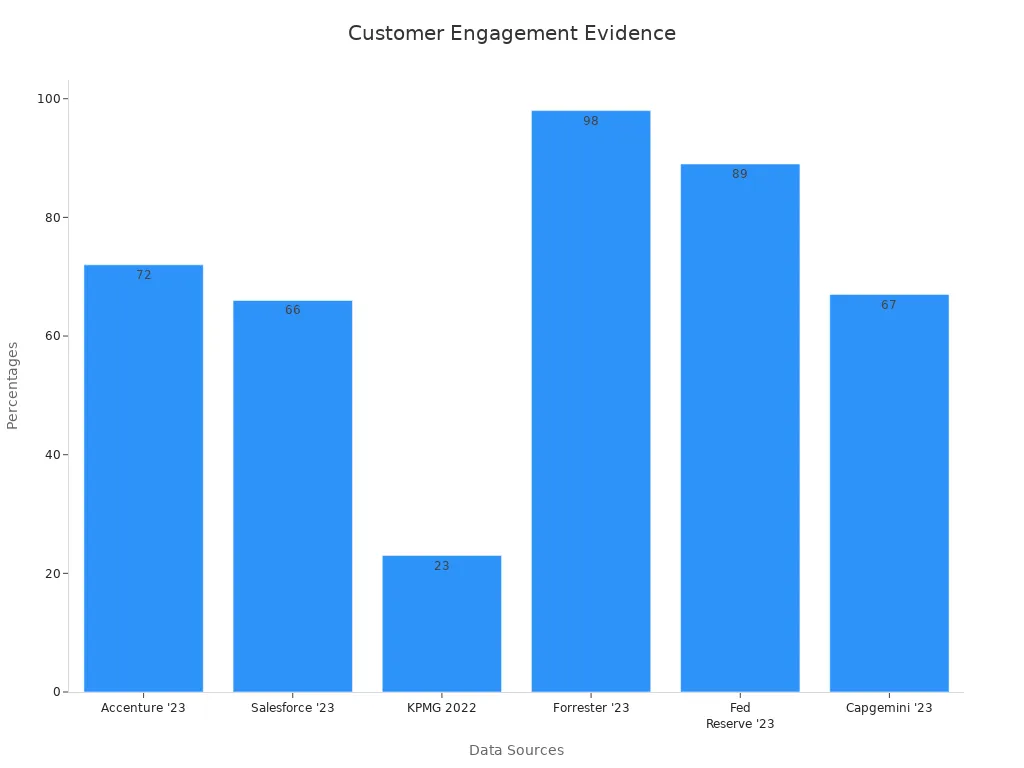
Sobot’s AI Chatbot excels at real-time personalization. It uses advanced machine learning to predict customer needs and provide instant solutions. For instance, if a customer abandons their cart, the chatbot can send a proactive message offering a discount to encourage them to complete the purchase. This approach not only boosts conversions but also enhances the overall customer experience.
Pro Tip: Use real-time personalization to address pain points like cart abandonment or low engagement. Small tweaks can lead to big results.
Integrating Omnichannel Strategies with Sobot's Solutions
Personalizing content across channels is no longer optional—it’s essential. Customers interact with brands through multiple platforms, and they expect a consistent experience. This is where omnichannel strategies shine. By integrating all your communication channels, you can create a seamless journey that keeps customers engaged.
Sobot’s solutions make this integration effortless. Here’s how:
- Multiple Channels: Sobot connects with platforms like WhatsApp, email, and social media, ensuring you can reach customers wherever they are.
- Efficiency Boost: Samsung reported a 30% increase in agent efficiency after adopting Sobot’s omnichannel solution.
- Customer Satisfaction: Samsung also achieved a 97% CSAT score, proving the effectiveness of Sobot’s approach.
Imagine a customer starts a conversation on social media, continues it via email, and completes their purchase through live chat. With Sobot, all these interactions are unified, giving your team a complete view of the customer journey. This not only improves efficiency but also ensures every interaction feels personal and relevant.
Did you know? Businesses using omnichannel strategies see 89% customer retention rates, compared to 33% for those without.
Sobot’s AI Chatbot plays a key role in personalizing content across channels. Its omnichannel support ensures that every interaction aligns with the customer’s preferences, whether they’re chatting on WhatsApp or browsing your website. By integrating these strategies, you can deliver dynamic recommendations that drive engagement and loyalty.
Tools and Technologies for Hyper-Personalization
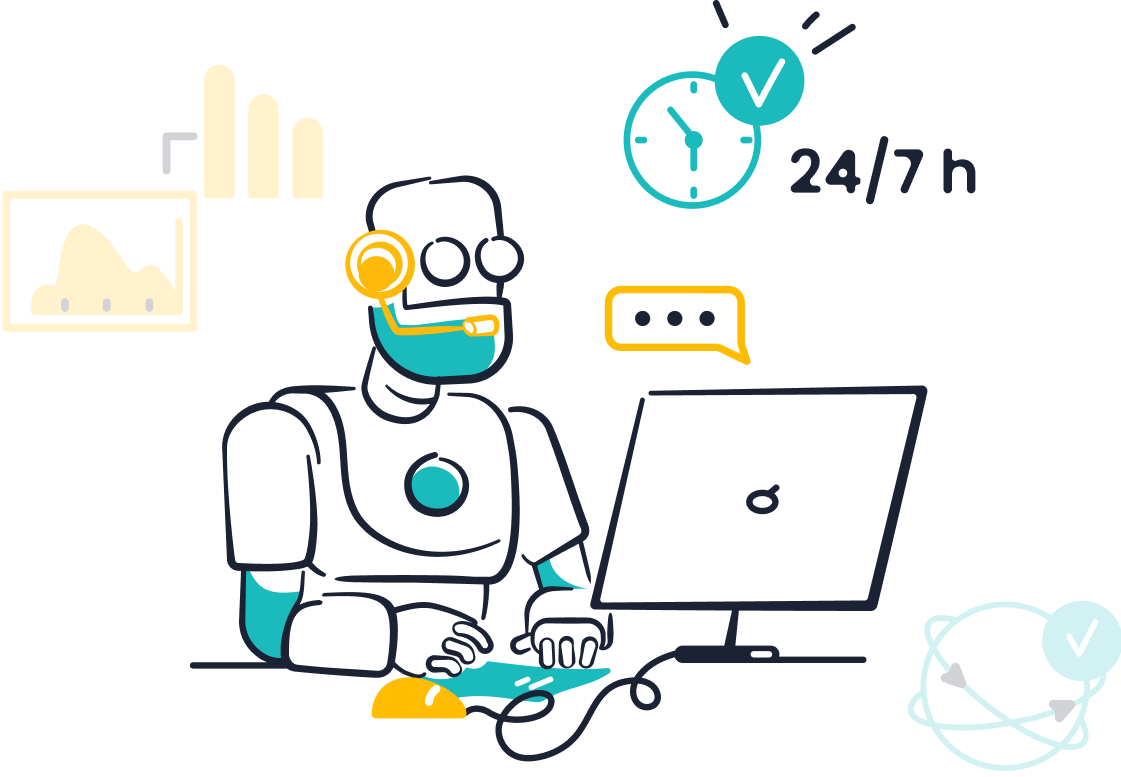
Role of Analytics Platforms and AI in CX Trends
Analytics platforms and AI are the backbone of hyper-personalization. They help you understand your customers better by analyzing vast amounts of data and uncovering actionable insights. These tools don’t just crunch numbers—they transform raw data into meaningful recommendations that drive engagement and loyalty.
Here’s why analytics and AI are reshaping customer experience trends:
- Massachusetts General Hospital reduced hospital readmissions by 22% using predictive analytics. This highlights how data-driven approaches can improve outcomes, even in industries like healthcare.
- 40% of CX leaders plan to increase investments in customer experience beyond inflation. This shows the growing importance of analytics and AI in enhancing customer interactions.
- Planet Fitness used advanced analytics to create detailed customer profiles, leading to improved personalization and satisfaction.
Sobot’s AI-powered solutions, like its Chatbot, leverage analytics to deliver real-time recommendations. For example, the chatbot analyzes customer intent instantly, ensuring every interaction feels tailored and relevant. Whether it’s predicting customer needs or optimizing communication strategies, analytics platforms and AI are essential for delivering hyper-personalized experiences.
CRM Systems and Customer Data Platforms (CDPs)
CRM systems and CDPs are the engines that drive hyper-personalization. They centralize customer data, making it easier to create seamless, personalized experiences across channels. These tools don’t just store information—they unify it, enabling you to understand your customers’ preferences, behaviors, and needs.
| Use Case | Description | Outcome |
|---|---|---|
| E-commerce Real-time Personalization | CDPs use real-time data to personalize customer journeys across multiple channels. | Boosts conversions and enhances customer experience. |
| In-store to Online Transition | Marketing teams analyze customer data to identify behaviors typical of customers transitioning from in-store to online shopping. | Significant increase in conversion rates. |
| Advanced Audience Segmentation | Retailers identify high-value customers at risk of churn and target them with exclusive offers. | Enhances retention and maximizes ROI. |
| Hyper-personalized Segments | Clients create hyper-personalized segments and execute campaigns seamlessly. | Maximizes customer lifetime value and minimizes communication overload. |
Sobot’s solutions integrate seamlessly with CRM systems and CDPs. For instance, the Sobot AI Chatbot uses unified customer profiles to deliver personalized recommendations in real time. This integration ensures that every interaction feels authentic, whether it’s through chat, email, or social media.
Sobot Chatbot: A Game-Changer in Hyper-Personalization
Sobot’s AI Chatbot is revolutionizing hyper-personalization. It combines advanced AI, real-time analytics, and omnichannel support to deliver tailored experiences that boost engagement and satisfaction.
Here’s why the Sobot Chatbot stands out:
- Customer Satisfaction Metrics:
| Metric | Value |
|----------------------------|-------------|
| Correct Answers Percentage | 80% |
| Customer Satisfaction Score | 95% |
| Self-answered Questions Rate | 22.2% |
| Problems Solved Percentage | 85% |
| Customer Happiness Rate | 99% |
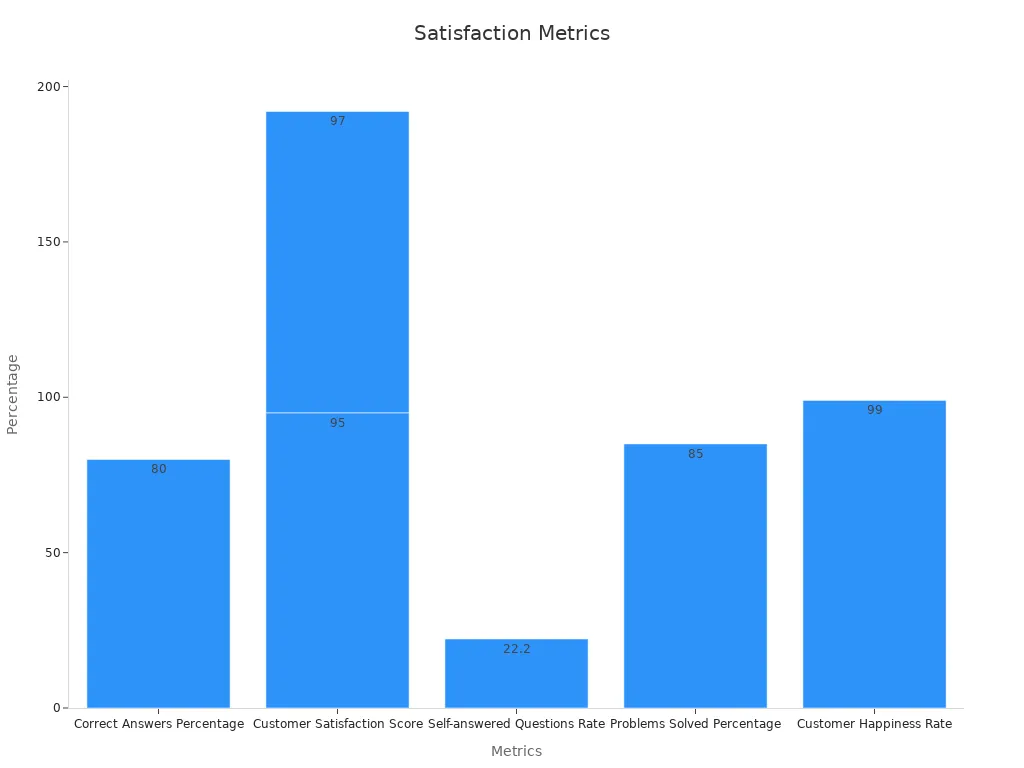
- Efficiency Boost: The chatbot improves productivity by 70% and reduces service costs by up to 50%.
- Real-Time Recommendations: It uses live data to analyze customer intent and provide instant solutions, enhancing conversions by 20%.
- Omnichannel Support: Whether it’s WhatsApp, SMS, or live chat, the chatbot ensures seamless interactions across platforms.
Michael Kors leveraged Sobot’s Chatbot to achieve a 95% customer satisfaction rate and a 20% increase in conversion rates. This success story proves how Sobot’s solutions can elevate your personalization strategies and drive measurable results.
Automation Tools for Real-Time Personalization
Automation tools are the secret sauce behind real-time personalization. They help you deliver tailored experiences instantly, no matter how many customers you’re serving. Imagine being able to predict what your customers need before they even ask. That’s the power of automation.
Why Automation Matters for Real-Time Personalization
Automation tools take the guesswork out of personalization. They analyze customer behavior, predict preferences, and deliver the right message at the right time. This isn’t just about convenience—it’s about creating meaningful connections that drive results. For example:
- Businesses using AI-powered personalization platforms have seen higher conversion rates, better customer retention, and increased revenue.
- A retail company reduced warehousing costs by 25% and product shortages by 15% through automated inventory management.
- Automated marketing campaigns have boosted email open rates by 25% and sales by 10%.
These numbers show how automation tools can transform your customer experience.
Key Features of Automation Tools
Not all automation tools are created equal. The best ones combine advanced technology with user-friendly features. Here’s what to look for:
- AI and Machine Learning: These technologies analyze data in real time, helping you understand customer intent and preferences.
- Omnichannel Support: Tools like Sobot’s AI Chatbot ensure seamless interactions across platforms like WhatsApp, email, and live chat.
- Customizable Workflows: Automation tools should adapt to your business needs, not the other way around.
- Real-Time Analytics: Instant insights allow you to tweak your strategies on the fly.
Tip: Choose tools that integrate easily with your existing systems. This saves time and ensures a smoother implementation process.
How Sobot’s Solutions Lead the Way
Sobot’s AI Chatbot is a game-changer in real-time personalization. It uses automation to deliver instant, tailored responses that feel human. Here’s how it stands out:
- Efficiency Boost: The chatbot improves productivity by 70% and reduces service costs by up to 50%.
- Real-Time Insights: It analyzes customer behavior as it happens, offering proactive solutions that enhance satisfaction.
- Omnichannel Integration: Whether your customers are on social media, email, or live chat, Sobot ensures a consistent experience.
Michael Kors, a global luxury brand, used Sobot’s solutions to achieve a 95% customer satisfaction rate and a 20% increase in conversions. This success story proves that automation tools like Sobot’s AI Chatbot can elevate your personalization game.
Real-World Impact of Automation
Automation isn’t just about technology—it’s about results. Here are some real-world examples:
- A company improved customer service efficiency by 40% and increased satisfaction by 30% using automated systems.
- Retailers using automated marketing platforms saw a 25% increase in email open rates and a 10% boost in sales.
- Businesses leveraging AI-driven personalization tools reported stronger customer relationships and brand loyalty.
These stories highlight the tangible benefits of automation tools for real-time personalization.
Pro Tip: Start small. Automate one or two key processes, then expand as you see results. This approach minimizes risks and maximizes impact.
The Future of Real-Time Personalization
Automation tools are constantly evolving. As AI and machine learning become more advanced, the possibilities for real-time personalization will only grow. By investing in the right tools today, you’re setting your business up for long-term success. Tools like Sobot’s AI Chatbot make it easy to stay ahead of the curve, delivering personalized experiences that keep your customers coming back.
Ready to take your personalization strategy to the next level? Start exploring automation tools like Sobot’s AI Chatbot and see the difference for yourself.
Measuring Success and Refining Hyper-Personalization Strategies
Key Metrics to Track Performance
Tracking the right metrics is essential to measure the success of hyper-personalization. These numbers tell you whether your strategies are working or need adjustments. Here’s a quick snapshot of key metrics:
| Metric | Description |
|---|---|
| Conversion Rates | Shows how well hyper-personalization turns leads into loyal customers. |
| Customer Engagement | Reflects user interaction through click-through rates, bounce rates, and session duration. |
| Customer Retention and Loyalty | Tracks return rates and average customer lifespan, highlighting loyalty-building efforts. |
| Revenue | Indicates how personalization impacts overall sales growth. |
| Customer Lifetime Value (CLTV) | Measures the total value of each customer over their lifetime. |
| Customer Satisfaction (CSAT) | Gauges overall satisfaction through surveys and feedback. |
| Net Promoter Score (NPS) | Shows how likely customers are to recommend your brand, a key indicator of loyalty. |
| Return on Ad Spend (ROAS) | Tracks revenue generated by marketing campaigns, helping optimize personalization strategies. |
These metrics help you understand how personalization impacts your business. For example, higher conversion rates and increased loyalty often signal that your offers resonate with customers.
Establishing Feedback Loops for Continuous Improvement
Feedback loops are the secret to building lasting relationships with your customers. They let you listen, adapt, and improve based on what your audience wants. Here’s how you can make feedback work for you:
- Engage with feedback to show you care about customer satisfaction.
- Monitor feedback regularly to spot trends and areas for improvement.
- Use feedback data to guide decisions about product development and service enhancements.
“A solid feedback loop fuels continuous optimization, creating a powerful compounding effect on customer lifetime value.”
For example, analyzing feedback might reveal that customers prefer personalized offers during checkout. Acting on this insight can boost loyalty and reduce cart abandonment.
Case Studies: How Michael Kors Enhanced CX with Sobot
Michael Kors, a global luxury brand, transformed its customer experience using Sobot’s solutions. The brand faced challenges with long response times and inconsistent engagement. By integrating Sobot’s tools, they unified customer reception channels and personalized interactions.
The results were remarkable:
- Response times dropped by 83%.
- Customer satisfaction soared to 95%.
- Conversion rates increased by 20%, thanks to personalized messaging through Sobot’s WhatsApp API.
This success story highlights how hyper-personalization can drive loyalty and revenue. Michael Kors didn’t just improve efficiency—they built lasting relationships with their customers.
Adapting Quickly to Changing Customer Behaviors
Customer behaviors are constantly evolving, and staying ahead of these changes is crucial for businesses aiming to deliver exceptional experiences. Today’s customers expect more than just good service—they want interactions that feel personal, seamless, and relevant. To meet these expectations, you need to adapt quickly and leverage tools that help you stay agile.
Hyper-personalization is no longer optional; it’s becoming the standard. By 2025, it’s expected to dominate customer experience trends, with businesses using AI and real-time data analytics to create highly individualized experiences. This proactive approach allows you to respond to shifting preferences and needs in real time. For example, if a customer frequently shops for eco-friendly products, your system can instantly recommend similar items or offer discounts on sustainable brands.
Advanced technologies like Sobot’s AI Chatbot make this level of personalization possible. It uses real-time data to analyze customer intent and provide tailored responses instantly. Whether a customer is browsing your website or chatting on WhatsApp, the chatbot ensures every interaction feels relevant and timely. This adaptability not only enhances satisfaction but also builds trust and loyalty.
To keep pace with changing customer behaviors, focus on creating adaptive systems. These systems should integrate seamlessly across all touchpoints, from social media to live chat. Customers now expect a unified experience, and businesses that deliver it gain a competitive edge. For instance, companies using omnichannel strategies report 89% customer retention rates, compared to just 33% for those without.
The key to success lies in being proactive. Monitor trends, analyze data, and use tools like Sobot to stay ahead. When you adapt quickly, you don’t just meet customer expectations—you exceed them.
Hyper-personalization is transforming how businesses connect with their customers. It’s no longer just about addressing someone by name—it’s about creating personalised experiences that resonate deeply. For instance, personalized emails boast a 29% higher open rate and a 41% higher click-through rate, proving their effectiveness in driving engagement and conversions.
| Statistic | Impact |
|---|---|
| 74% of consumers expect personalized interactions by 2024 | Highlights the demand for hyper-personalization |
| 80% of consumers view personalized recommendations positively | Shows the appeal of hyper-personalization for loyalty |
Tools like Sobot's Chatbot make this process seamless. By leveraging AI and real-time data, you can deliver tailored interactions that boost customer satisfaction and loyalty. Remember, success lies in continuous improvement and respecting privacy. When you prioritize ethical practices, you build trust and long-lasting relationships.
FAQ
1. What is hyper-personalization, and why does it matter?
Hyper-personalization uses AI and real-time data to create tailored customer experiences. It matters because 74% of consumers expect personalized interactions by 2024. Tools like Sobot’s AI Chatbot help businesses meet these expectations, boosting engagement and loyalty.
Fun Fact: Personalized emails have a 41% higher click-through rate than generic ones!
2. How does Sobot’s AI Chatbot support hyper-personalization?
Sobot’s AI Chatbot analyzes customer intent in real time. It delivers instant, tailored responses across platforms like WhatsApp and email. This boosts efficiency by 70% and increases conversions by 20%. Its multilingual support ensures every customer feels understood, no matter their language.
3. Is hyper-personalization ethical?
Yes, when done transparently. Ethical hyper-personalization respects privacy laws like GDPR and CCPA. Sobot ensures compliance with features like data encryption and anonymized training. Customers appreciate transparency, which builds trust and loyalty.
Tip: Always explain how you use customer data to create a win-win relationship.
4. Can small businesses afford hyper-personalization?
Absolutely! Tools like Sobot’s AI Chatbot are cost-effective and easy to implement. They reduce service costs by up to 50% while improving productivity. Even small businesses can deliver big-brand experiences with the right technology.
5. How do I measure the success of hyper-personalization?
Track metrics like conversion rates, customer satisfaction (CSAT), and Net Promoter Score (NPS). For example, Michael Kors achieved a 95% CSAT and a 20% conversion boost using Sobot’s solutions. These numbers show how personalization impacts your bottom line.
Pro Tip: Use feedback loops to refine your strategies and stay ahead of customer expectations.
See Also
Enhance Customer Satisfaction With These 10 Live Chat Tips
Maximize Your Live Chat Efficiency Around The Clock
Transforming Customer Support With AI Service Agents